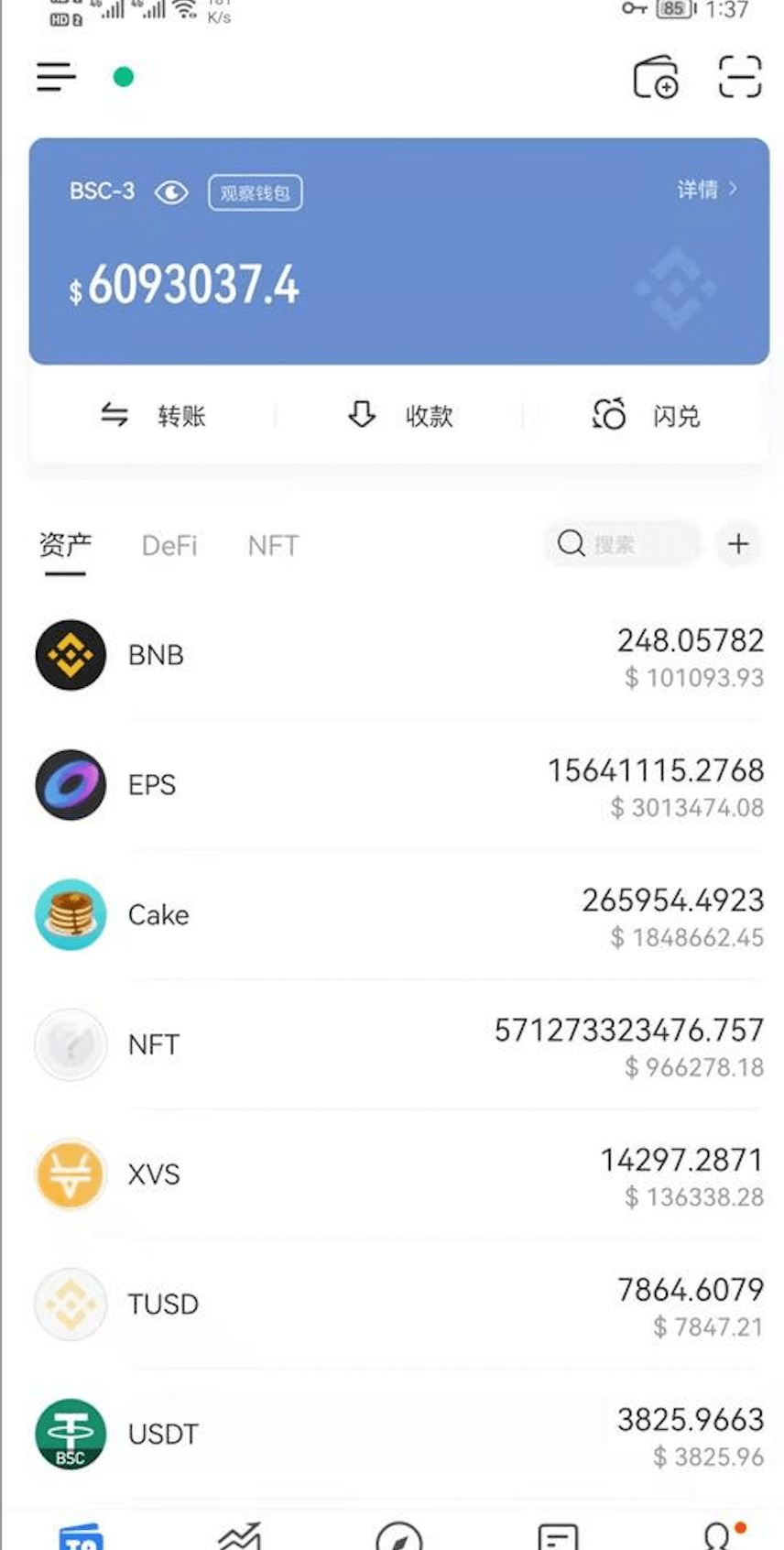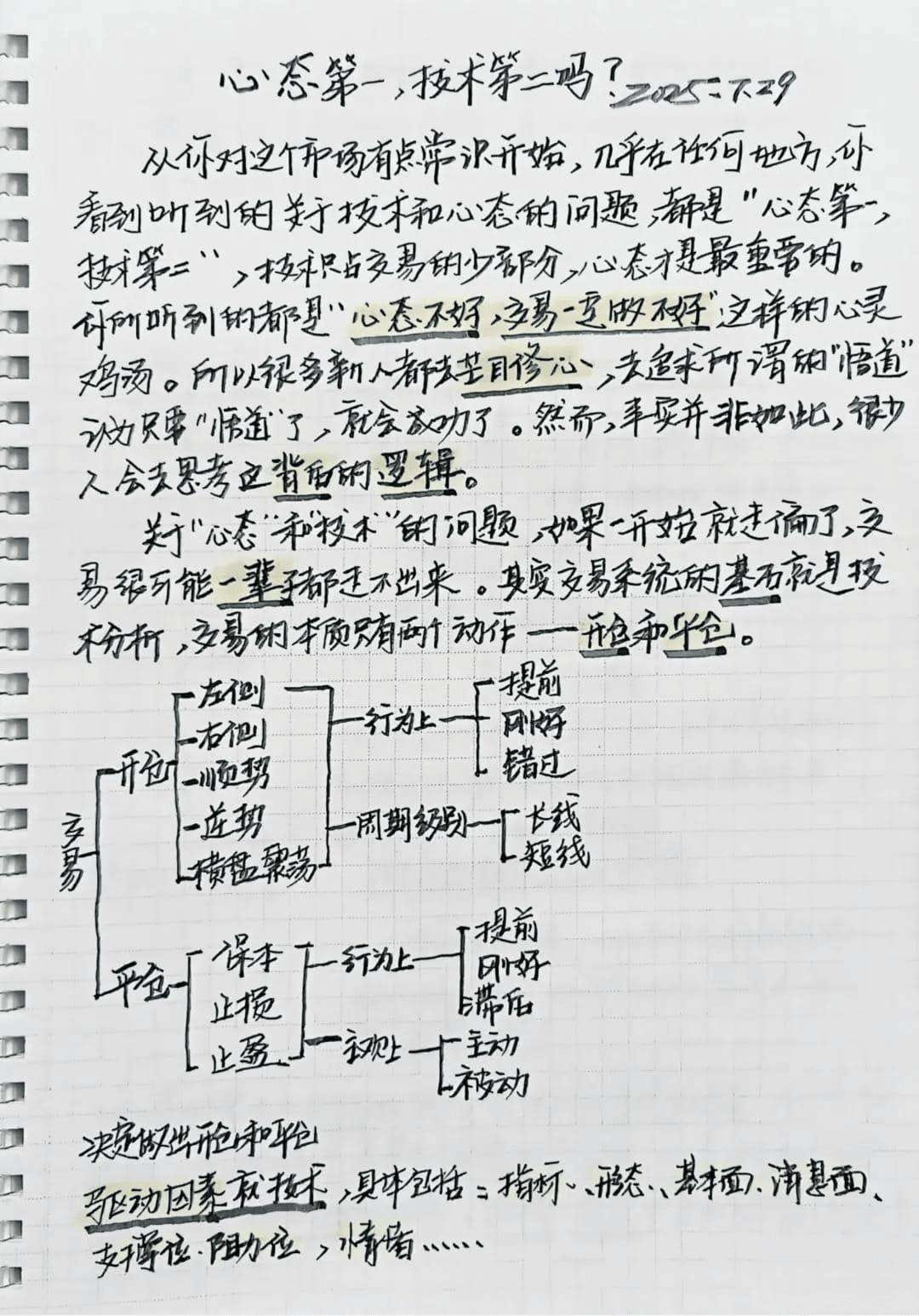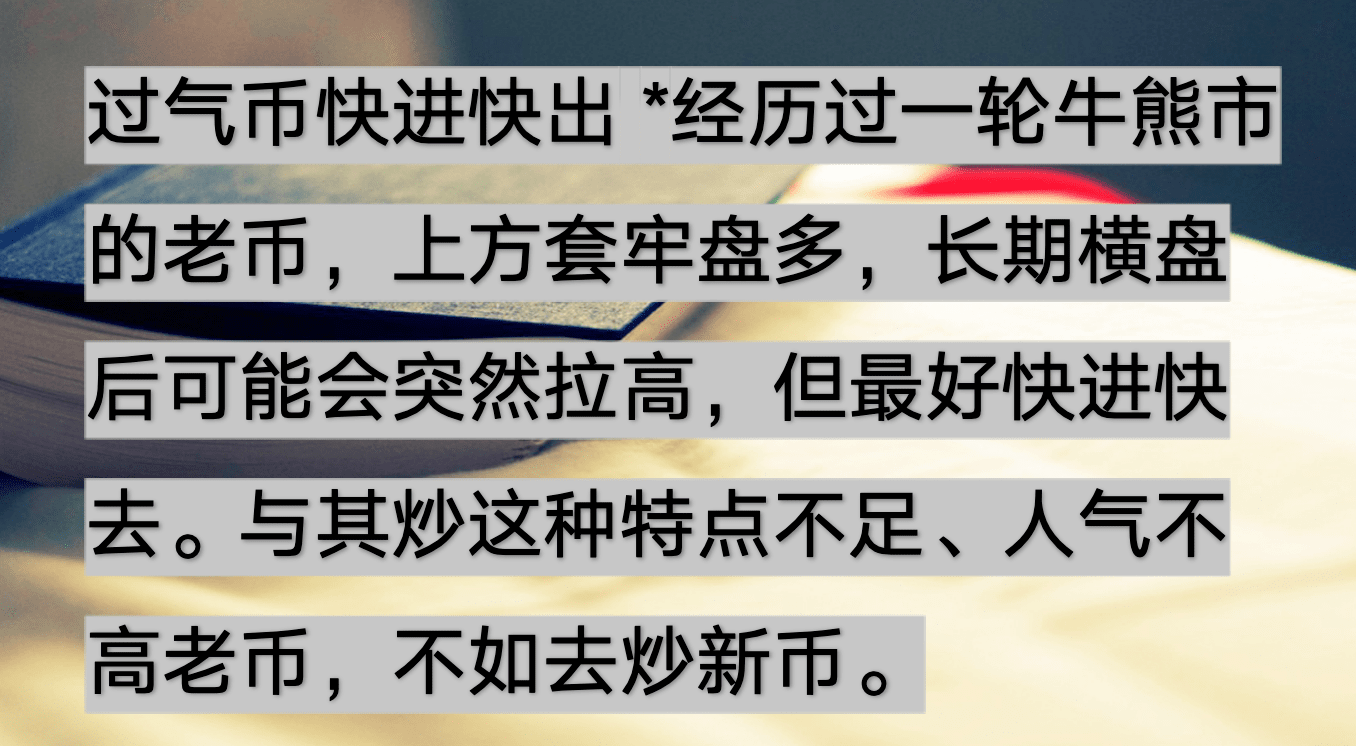Having been in the cryptocurrency space for ten years, with six years of professional trading, over 3100 days. I have engaged in long-term, short-term, ultra-short, and swing trading; I have basically tried every type of method, so I have a say on this issue.
I have always said that mastering a skill requires the ten-thousand-hour rule: 8 hours a day, over 200 days a year, about 5 years; this is just the beginning.
The foundation for stable profits. There will definitely be major pitfalls within 10 years, so to be prudent, do not put your principal beyond your capability within 10 years.
Many experts who traded from tens of thousands to millions or even billions just opened huge multiples on contracts, but many ended up dead in a bear market; you just don’t know it. Human nature, in the face of major trends, often leads people to lose their ability to judge correctly.
Returning to the main point, I will share all my valuable techniques with everyone here!

What is short-term trading? What should one pay attention to when trading short-term in the cryptocurrency space?
In our actual trading process, many investors like to trade short-term, but many newcomers do not know how to trade short-term.
There is a significant difference in the definition of short-term trading; let me first share the trading levels.

The trading levels we commonly use are: 5 minutes, 15 minutes, 1 hour, 4 hours, daily, weekly. Of course, there are also other timeframes used as trading levels, such as 10 minutes, 30 minutes, 2 hours, 3 hours, 6 hours, 2-day, 5-day, etc.
5 minutes, 15 minutes, 1 hour, and 4 hours belong to short-term trading levels; this depends on the personal time one usually uses. Short-term trading has a short duration and fast changes; you must enter and exit using the same timeframe, and cannot confuse them. For example, if trading at a 15-minute level, after entering, do not look at the 1-hour chart to exit because there are four 15-minute candles in one hour, looking at the hour may lead to profit withdrawal or being trapped.
Some people also define short-term trading as intraday trading, which means this trade can last a bit longer, but will exit before going to sleep.
Therefore, the definition of short-term trading varies from person to person; just follow your trading habits.

There are two ways to trade short-term: ranging market and breakout market. Short-term trading in a ranging market means trading back and forth within a range, going long at the bottom and short at the top. Short-term trading in a ranging market often does not have a large space; most short-term traders prefer to trade ranging markets because these markets are relatively stable.
Breakout trading is short-term trend trading.
There are two ways to trade the breakout market:
One type is when the market trend is relatively strong, entering when breaking through; this is left-side trading, and left-side trading can get stopped out when encountering false breakouts.
Another method is to wait for a breakout and then enter after a pullback on reduced volume; this is right-side trading.

The first type has a higher risk, the second type has a lower risk and is more certain, but the drawback of the second type is that it is easy to miss opportunities.
My short-term trading operation for breakout markets is to enter a portion when breaking through, and add more when the pullback does not break support. The benefit of this is that it reduces risk and prevents missing opportunities.
There are two important points to note in short-term trading:

The first point is being trapped; not setting a stop loss, and then being trapped all the way, eventually being forced to liquidate or cut losses.
The second point is making short-term trades into long-term ones; the original strategy was to trade short-term, but due to a lack of risk awareness, or overconfidence in one's trading skills, it leads to being trapped, and then constantly averaging down to lower the average cost, resulting in larger losses. No matter which method of short-term trading, risk must come first; regardless of how good the market is, a stop loss must be set upon entry.
Having the ability to understand the market and having your own trading strategy, regardless of the method, the risk is controllable. If you lack the ability to understand market trends, lack a trading strategy, or do not execute the trading strategy, the risk is uncontrollable.

How can ordinary people make money in the cryptocurrency space?
Ordinary people in the cryptocurrency space cannot make money; currently, based on my personal experience in the cryptocurrency space, it is ten not saved in one; the more heartbreaking data is that it is not saved in a hundred.
The reality that hurts more than the heart is that a thousand do not save one.
To friends who see my article, whether you believe it or not, it actually means nothing to me, because what exists between people is just interests. For you, for me, I have no demands, not even a little. I cannot pretend to be virtuous and promise you that in the cryptocurrency space, seeing my article, you think I’m a big shot.
I cannot rescue you from your current predicament; do not expect me to.
I am just speaking the truth; if you feel uncomfortable hearing it, I really cannot help it. I am not a scammer, am I? If I were a scammer trying to earn that little bit of your capital, I would want to tell you what you like to hear, but I cannot.
Because for every friend who sees my article, I ask for nothing; this is my original intention, and also my starting point.
If you understand me now, I thank you. If you cannot understand me because you lack experience, I am also very calm; it is that simple.
The cryptocurrency space is a global financial market where only the jungle law can survive. If you cannot make money or achieve results, do not resent anyone or any institution. Even those who have deceived you or led you to make losses, or even those who have confused you under the guise of blockchain.
You must thank them; it is they who have helped you grow, they have given you experience, and they have pushed you to change yourself!
Even if you are scammed, even if you are currently in a low point in life because of a scam, you should be grateful to them for letting you experience life's pain, so you can grow.
Because in the financial market, complaining does not solve any real problems. If you fail at contracts or investments, and cannot pay your credit card bills or online loans, or if you borrowed from family and friends, are you in trouble?
Wake up, everything you can experience, I have experienced, and often more.
When you seek everything from outside, you have already lost. Losing is not scary; if you can face failure with courage and make a heartfelt change, I believe the future will surely be promising.
Unless you are rotten to the core and do not want to improve, even divine beings cannot help you.
Just like in real life, everyone hopes to have noble people to help in difficult times, but have you considered anything?
Noble people can help you, and there are many choices for noble people. Why would they help you?
And we, who are in difficulty, have no choices.
This is the reality; do not blame anyone. If you want to succeed, start changing your own flaws and shortcomings little by little; that is the way.
When you improve your thinking and change your behavior, noble people will naturally appear.

Practical tips for short-term trading in the cryptocurrency space!
Some may say that short-term trading is speculation! First, let me clarify: short-term trading is not speculation. Real short-term trading is mastering certain market operation rules and requires strong skills. Short-term trading tests a person's skills and patience. Those who excel in short-term trading must have seen many candlestick charts, studied their movements, and summarized the general rules.
In addition to reflecting short, medium, and long-term fluctuations, the most macro point of the K-line chart is that it can tell you which projects have good market cap management and which projects collapse after being dumped, purely harvesting investors. For example, we have previously mentioned that there are many fork coins of BTC, but in fact, except for BCH, the K-lines of other fork coins are unreadable.
The K-lines of these forked coins have been declining since their peak, basically with no fluctuations, like sliding down a slide, leaving no opportunity for investors to escape. From their K-line charts, it can be seen that the dealer no longer holds a large amount of coins; these coins are concentrated in the hands of retail investors, so no one is pulling the price up, and it has basically become a relic. Many investors traded these coins from short-term to mid-term, from mid-term to long-term, and from long-term to relics.
In addition to being able to read candlestick charts, we also need to follow several key principles of short-term trading. First is the profit protection principle: when buying a coin, if it earns more than 10%, we should begin to implement the principal protection principle (if it later drops to the buying price, sell unconditionally). If it earns around 20%, we stipulate that this trade must earn at least 10% to sell, in order to maximize profits. When earning 20%, we stipulate that we will not sell unless the profit drops to only 10%, unless we are very certain about a technical peak; otherwise, we will not sell.
Next is the principal protection principle: After buying a particular coin, if it gradually loses 15% (this number varies for each person; I suggest 15% is most suitable), then cut losses and exit. This is to stop losses in time. If it goes up again afterward, it doesn't matter; after all, that was an incorrect entry point, a wrong trade. Mistakes must pay the price, and the price is the loss; losses lead to better memory, and good memory means you won't think about chasing after it.
In short, short-term operations must follow some basic principles, especially note: quick in and out does not mean frequent entries and exits, chasing hotspots does not mean blindly choosing, taking profits does not mean being timid, staying in cash does not mean staying away from the cryptocurrency space, and entry and exit points do not require chasing the lowest and highest prices.
Some strategies or points to note for short-term investment:

1. Position: The position in short-term trading should not be too large, at most 10% of the total position; the rest should be kept for long-term or used for averaging down. After all, long-term positions are the foundation of our profits.
2. Coin types: Although trading short-term, try not to touch coins you do not understand. Prioritize those you are familiar with and can comprehend. If it is in a bear market, it is advisable to only touch mainstream coins or even Bitcoin, because even if the stop loss is not timely, being trapped or losing is only temporary, whereas altcoins may not be the case; being trapped could mean forever.
3. Time: My personal definition of short-term is within half a month or even a month. Unless you can always keep an eye on the market or have relevant automation software, I do not recommend engaging in trades that last only a few hours. The specific short-term time should depend on market trends, ranging from a few days to about ten days.
4. Take profit and stop loss: I have found that significant losses in short-term trading often occur because take profits or stop losses are not timely. Therefore, when participating in short-term trading, everyone must have a rough take profit and stop loss plan. This plan does not need to be overly detailed; a general direction is sufficient, and then adjust it according to market changes.
In addition to sharing some short-term trading tips, I have also summarized some techniques for trading coins, hoping to help investors.

1. Familiarize yourself with various candlestick chart technical analyses.
2. Do not go all in or go short in a short time.
3. Give yourself a military order to take profit and stop loss in time.
4. During rapid rises and falls, try not to operate.
5. Do not put too much pressure on yourself; maintain a balanced mindset.
6. Do not look at too many analyses from others; everyone says different things. The price trend is influenced by many factors, and all predictions about the future are fifty-fifty, half right and half wrong; just believe in yourself.
7. Over-trading can affect health, but when a clear upward or downward trend arrives, you must use your wisdom to go long or short, thereby making money.

I summarize the rules for trading coins, along with my insights:
When trading old coins, choose the top brands * Top brands besides BTC and ETH also include leading coins from different sectors, such as Monero, the privacy coin.

When trading new coins, prefer big brands * Big brands refer to those with high popularity and recognition, as well as investments from well-known investment institutions, which help avoid junk coins.

Avoid domestic coins as much as possible * Domestic coins are often driven by trends or short-term speculation, have weaker innovation, and many are junk coins.

Obsolete coins should be in and out quickly * Old coins that have gone through a bull and bear market often have many trapped positions above. After a long period of sideways trading, they may suddenly spike, but it's best to get in and out quickly. Instead of trading such lackluster and unpopular old coins, it's better to trade new coins.

In a bull market, go long, do not short * Go with the trend, although there will be pullbacks, it can recover, so going long has the least risk.

Going with the trend can create miracles * A bull market is suitable for coin-based trading; earning more coins means earning more money.

In a bear market, go short, do not go long * In a bear market, one should follow the trend, although there may be rebounds, the probability of continued decline is greater. One should not easily go long before seeing a bottom.

Capital safety is the most important * In a bear market, one should use fiat currency as the base; bear market prices often drop by more than 90%, so ensure the safety of your capital.

Do not pay too much attention to the truth of news * News is always rampant, true or false; do not trust too much, and news seen from sources always has a lag.

Everyone reacts to the market * If there is good news but no rise, then look bearish; if there is bad news but no drop, then look bullish. One cannot assume good news means a rise, and bad news means a drop.

Blind guessing and following others leads to no growth * Many apps now provide following options, automatically following the direction of big players. This can easily be manipulated, and you cannot learn the logic behind their trades, leading to no growth.

Technology is the compass * The trading market often has two types of people, one is the news faction, who place orders based on news, whether the news is gossip or public. The other is the technical faction, who determine direction through candlesticks, volume-price relationships, and indicators. I personally believe that for sufficiently traded currencies such as BTC, technology is the most effective tool. But for insufficiently traded currencies, especially early-stage coins, where trading depth is poor, news has a significant impact on their prices.

Do not expect luck * It's impossible to always have good luck, so one must have a calm mindset.

Do not seek success in trading * Trading is not a lottery; it is a probability game. Do not rush to achieve; particularly pay attention to stop loss and take profit.

The unity of knowledge and action is incredibly difficult * Knowing is easy, but doing is hard. Trading is a struggle against one's own greed and fear, and it is extremely difficult.

Cultivation is only practiced in action * If you want to cultivate, why bother to leave home? Trading is enough; only by overcoming greed, hatred, and ignorance can one achieve the unity of knowledge and action, being poor but not vexatious, and rich but not arrogant.

A profound insight: The survival rule in the cryptocurrency space is not to pursue short-term profits, but to build a stable profit system. The effect of compound interest is like a snowball; the longer it lasts, the more powerful it becomes. Only by establishing a scientific position management and risk control mechanism can assets continue to appreciate in the market fluctuations.
Facing the ever-changing market, we need to establish a dynamic observation system: When Bitcoin breaks key resistance levels, when mainstream coins show divergence signals, when the market sentiment index enters extreme ranges, these are all important nodes worth paying attention to.
True winners in the cryptocurrency space can reap profits in a bull market and preserve their strength in a bear market.
